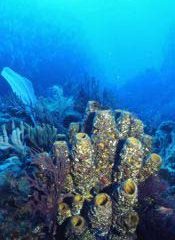
Yellow fever has been written off in the past as a global threat. Yet the failure to eradicate this disease has left the door open for new, large, outbreaks as vaccination of travellers and tropical populations declines, according to an article in the February issue of Microbiology Today magazine from the Society for General Microbiology.
“Yellow fever virus attracts less public attention than, for instance, lassa and ebola, but it remains the greater threat. Containment through effective m

After nearly 12 years of incredible scientific discoveries, the ESA/NASA Hubble Space Telescope orbiting Earth is about to have another service visit. The purpose is to upgrade Hubble system and to install newer and more powerful instruments that will astoundingly increase Hubble’s discovery capabilities and extend the longevity of the observatory.
As a unique collaboration between the European Space Agency (ESA), and NASA, Hubble has had a phenomenal scientific impact. The unsurpassed sha

Conservation-oriented parks and reserves are fairly common on land, but comparatively few marine regions receive protection from human activities. This situation has, for the most part, elicited little concern, owing to the widely held belief that the large geographic ranges of most marine species would ensure their survival. But new research on restricted-range marine life—that is, species limited to small areas—challenges that idea, identifying 10 regions where further damage to coral reefs could l

Light-sensitive ’plastic’ magnets could replace your hard drive.
A ’plastic’ magnet that responds to light could lead to new ways of storing and reading large amounts of computer data. Light would be used to store information in cheap, fast and high-capacity ’magneto-optic’ memories.
The light-switchable magnet is the first to be made from organic (carbon-based) molecules. This means its discoverers, Arthur Epstein of Ohio State University in Columbus and Joel Miller of the

Snails can teach us a great deal about how we form memories, according to a group of neuroscientists at the University of Sussex.
Research by Dr Ildikó Kemenes, Professor Paul Benjamin, Professor Michael O’Shea and colleagues shows that nitric oxide plays a vital role in the formation of long-term memory in snails. This is of crucial importance because the gas has already been shown to play such a role in humans and other mammals.
Ideally, scientists would like to use mammals to st

A computerised navigation system has been developed to enable wheelchair users to select the most accessible routes around a town centre. It means a journey can be planned that avoids obstacles like cobbled streets, steep areas and steps.
The work has been carried out by a team led by Professor Hugh Matthews, at University College Northampton, with funding from the Swindon based Engineering and Physical Sciences Research Council.
The ‘Wheelyroute’ system, believed to be the first

At the Berlin synchrotron radiation source BESSY II, the largest magnetic anisotropy of a single molecule ever measured experimentally has been determined. The larger this anisotropy is, the better a…

LSU quantum researchers uncover hidden quantum behaviors within classical light, which could make quantum technologies robust. Understanding the boundary between classical and quantum physics has long been a central question…

One of the biggest mysteries in science – dark energy – doesn’t actually exist, according to researchers looking to solve the riddle of how the Universe is expanding. For the…

A team led by plant biotechnologist Prof Markus Schwarzländer from the University of Münster and biochemist Prof Bruce Morgan from Saarland University has developed new biosensors with which the ratio…

How deubiquitinases USP53 and USP54 cleave long polyubiquitin chains and how the former is linked to liver disease in children. Deubiquitinases (DUBs) are enzymes used by cells to trim protein…

Conceptual blueprint to analyze experimental catalyst data. Machine learning (ML) models have recently become popular in the field of heterogeneous catalyst design. The inherent complexity of the interactions between catalyst…

How simulations help manufacturing of modern displays. Modern materials must be recyclable and sustainable. Consumer electronics is no exception, with organic light-emitting diodes (OLEDs) taking over modern televisions and portable…

“Neurons that fire together, wire together” describes the neural plasticity seen in human brains, but neurons grown in a dish don’t seem to follow these rules. Neurons that are cultured…

The quest for sustainable energy solutions has been a major focus of scientific research for decades. Solar energy, a clean and renewable source, has emerged as a promising alternative to…

Pacific Northwest National Laboratory to contribute leadership to national effort in microelectronics design and development. Microelectronics run the modern world. Staying ahead of the development curve requires an investment that…

With a processing speed a billion times faster than nature, chip-based laser neuron could help advance AI tasks such as pattern recognition and sequence prediction. Researchers have developed a laser-based…

New technology could remotely identify various types of plastics, offering a valuable tool for future monitoring and analysis of oceanic plastic pollution. Researchers have developed a new hyperspectral Raman imaging…